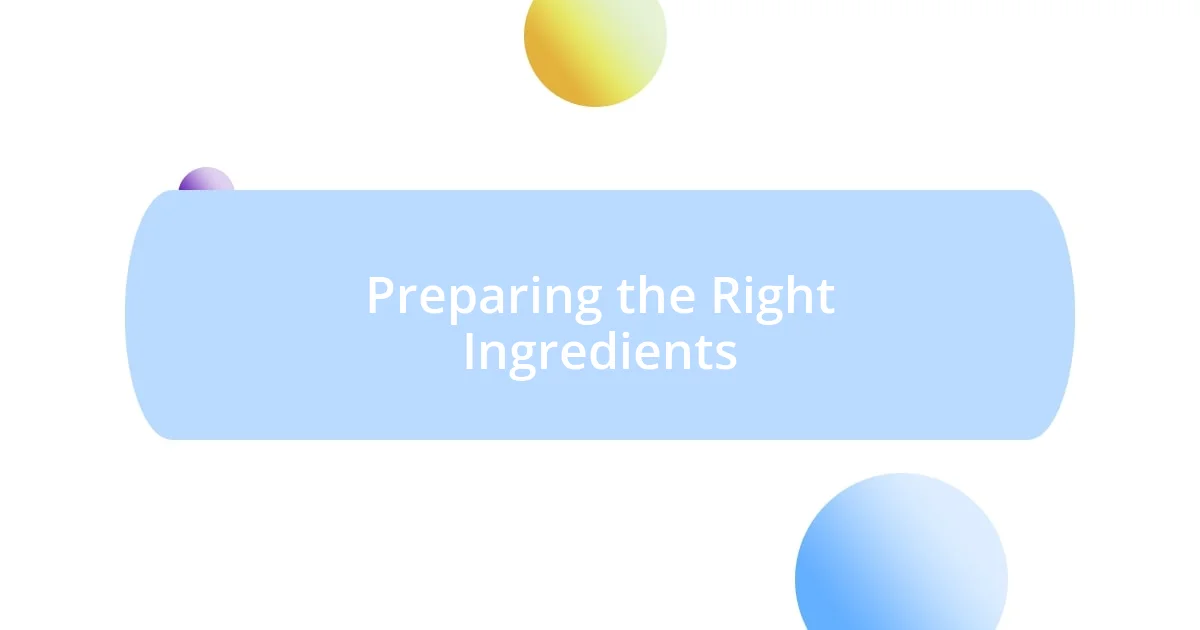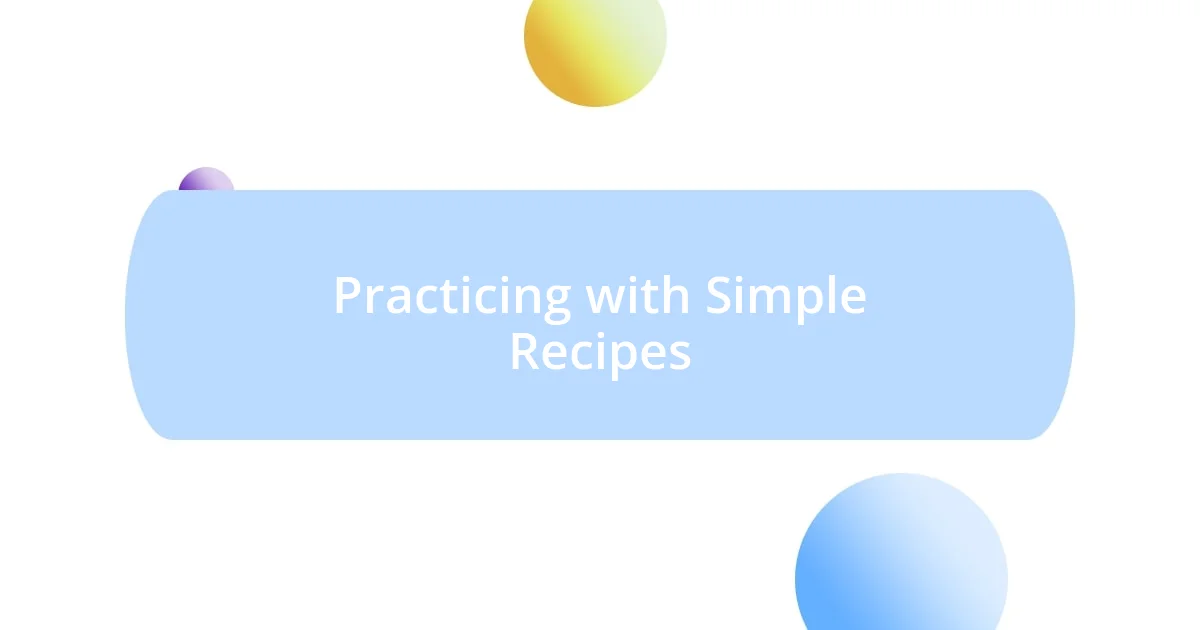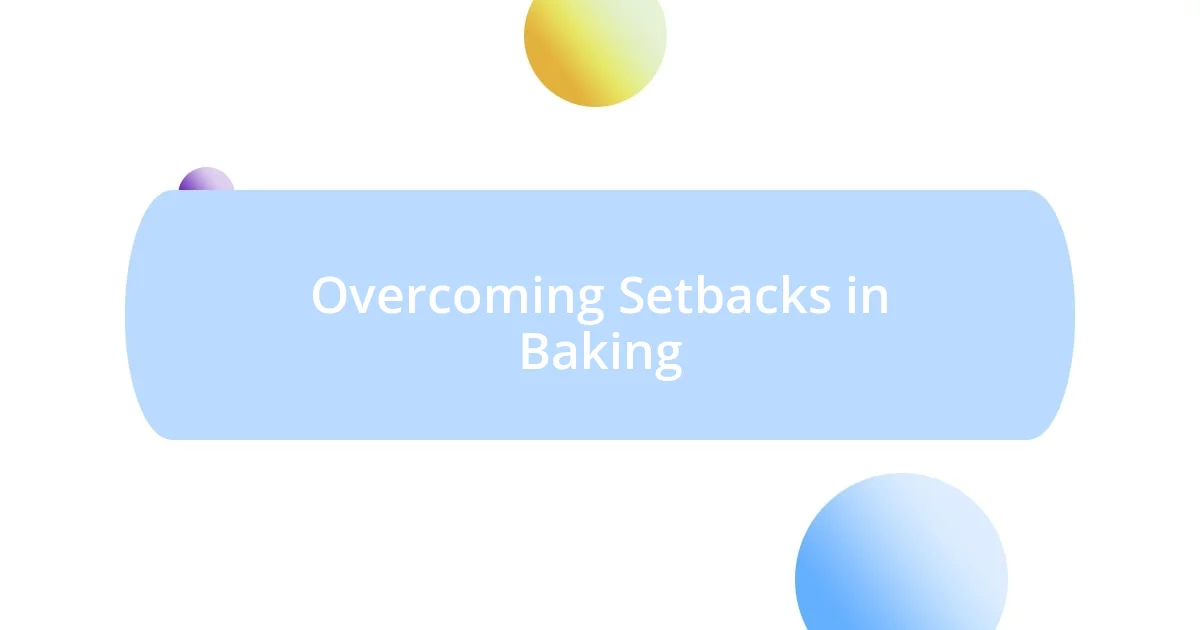Key takeaways:
- The author’s initial fear of meringue stemmed from early failures, leading to a sense of anxiety and self-doubt about baking.
- By researching meringue techniques and understanding the importance of ingredients and environment, the author transformed fear into a newfound appreciation for baking.
- Overcoming setbacks became a crucial part of the baking journey, leading to shared successes and the realization that cooking is not only about skill but also about creating joyful experiences with others.

Understanding My Fear of Meringue
Meringue always loomed large in my kitchen, a dessert that felt almost mythical in its perfection. I vividly remember the first time I tried to make it; those egg whites stubbornly refused to whip into glossy peaks, and it left me feeling defeated. It’s funny how one culinary disaster can shape your confidence and make a seemingly simple recipe feel like an insurmountable challenge.
The more I learned about meringue, the more my anxiety grew. I began to associate it with failure, imagining it deflating under the weight of my expectations. Have you ever felt that way about a dish? That sense of impending doom whenever you attempt it again? I carried that fear with me for quite some time, questioning whether I was cut out to tackle a recipe that had brought so many others joy.
Then, amid all that apprehension, I discovered a little secret: meringue is forgiving once you understand it. I think back to my breakthrough moment, when I finally grasped the importance of room temperature eggs and clean bowls. It was as if a light bulb went off, and I felt a rush of excitement rather than dread, igniting a passion for baking I’d never expected to find.

Researching Meringue Basics
Researching the basics of meringue opened my eyes to its delicate nature. I found that mastering meringue starts with understanding the role of egg whites, sugar, and the environment. Did you know that even a speck of fat can sabotage your efforts? I learned the hard way when I accidentally introduced a greasy mixing bowl into the equation, and my meringue turned into a sad puddle. This experience taught me the importance of clean kitchen tools, an essential aspect that I now take seriously.
As I delved deeper into meringue techniques, I stumbled upon the fascinating science behind sugar and egg whites. The key lies in achieving the right consistency, where sugar is carefully incorporated to create that perfect glossy shine. It’s like turning pesky egg whites into extraordinary clouds of sweetness! I recall setting my timer, watching intently as the mixer spun, feeling a rush of anticipation each time I opened the bowl to check if I had finally achieved the peaks I longed for. Those moments became a dance of patience and excitement.
I was pleasantly surprised to learn about different types of meringue, such as French, Swiss, and Italian. Each offers unique textures and flavors, and I felt empowered by the idea that I could diversify my baking repertoire. Exploring these options fueled my creativity. For example, Swiss meringue added such a beautiful silky texture to my buttercream that I hadn’t known was possible. It’s this blend of research and practice that transformed my fear into a newfound appreciation for meringue and baking itself.
| Meringue Type | Key Characteristics |
|---|---|
| French Meringue | Light and airy, made by whipping egg whites with sugar at room temperature. |
| Swiss Meringue | Silky texture created by gently heating egg whites and sugar over a double boiler before whipping. |
| Italian Meringue | Stabilized by pouring hot sugar syrup into whipped egg whites for a glossy finish. |

Preparing the Right Ingredients
Preparing the right ingredients for meringue feels like setting the stage for a grand performance. I remember standing at my kitchen counter, triple-checking each component before I got started. It turned out that freshness is everything when it comes to eggs. The thrill of cracking open an egg, knowing it was farm-fresh, made me feel like I was unlocking the secret to meringue success.
Here are the essential ingredients I always keep in mind:
- Egg Whites: Use the freshest possible; older eggs can be more challenging to whip.
- Granulated Sugar: Fine sugar dissolves better, resulting in a smoother texture.
- Cream of Tartar or Lemon Juice: These stabilize the egg whites, helping to maintain volume and shine.
- Flavorings: A splash of vanilla or almond extract can elevate your meringue, adding a personal touch.
- A Pinch of Salt: Just a hint enhances the overall flavor without making it salty.
I’ve learned through trial and error that the environment plays a huge role too. For instance, the weather can influence how well your meringue turns out. A humid day once led to a sticky mess, reminding me of the importance of making meringue in dry conditions. The process is steeped in precision, and it’s like a dance between the ingredients and the baker. I now make it a point to gather everything in advance and double-check my tools.
As I reflect on my journey, it’s fulfilling to finally embrace all these elements. Each meringue-making session now feels like a celebration, thanks to the understanding of how the right ingredients set the foundation for that ethereal sweetness I once thought unattainable.

Mastering Meringue Techniques
Mastering meringue techniques is much more than just a method; it’s a journey filled with delightful discovery. I remember the first time I successfully whipped my egg whites to stiff peaks. It felt like alchemy—transforming a simple ingredient into something magnificent! The trick? Patience while waiting for the right moment to add sugar. I learned that gradually introducing sugar while the mixer is running creates a silky texture that’s essential for that glossy finish we all desire.
As I delved deeper, I realized temperature control is crucial. Room temperature egg whites whip up better than their cold counterparts. It became my little ritual, letting the eggs sit out while I prepped the rest of my ingredients. It might sound simple, but trusting this process took time. Have you ever felt that rush of excitement when watching something transform in front of you? That’s precisely how I felt each time my egg whites turned from liquid to fluffy clouds, making my baking adventures feel like pure magic.
Another key technique I adopted was double-checking for any pesky grease before I started. I still vividly recall the heart-wrenching disappointment when I neglected to check my bowl and ended up with a soupy disaster. From that moment, I developed a habit of wiping down everything with a little vinegar, which easily removes any traces of fat. It’s a small step, but such attention to detail makes a world of difference. Now, meringue feels like a captivating dance, where each beat and move counts toward creating something fabulous!

Practicing with Simple Recipes
As I dove into practicing meringue, I sought out simple recipes to build my confidence step by step. My first successful attempt was a classic meringue cookie, where I felt like I was chasing a dream. Each time I piped those little shapes onto the baking sheet, a mix of excitement and anxiety bubbled up inside me. Would they hold their shape while baking? The thrill of watching them puff up beautifully made all the efforts worthwhile.
One of my favorite straightforward recipes was for a lemon meringue pie. I adored that moment when the sweet-tart filling paired perfectly with the light, airy topping. The contrast in flavors echoed the triumph of overcoming fear; each bite was a reminder of my progress. I learned that starting with manageable recipes helped me gain control over my technique and understand how flavor profiles work.
I discovered that even minor variations in technique can yield different results. One time, I tried to improvise with a recipe while distracted, and my meringue came out far too grainy. It was a humbling experience, reminding me that precision is essential. But instead of feeling discouraged, I embraced it as part of my learning curve. After all, isn’t it comforting to know that every baking mishap teaches us something new? Each failure became a stepping stone, guiding me closer to that perfect, smooth meringue I dreamed of creating.

Overcoming Setbacks in Baking
I vividly recall an afternoon when my meringue failed spectacularly. I had carefully measured my ingredients, yet somehow, it turned into a grainy mess instead of the fluffy cloud I envisioned. At that moment, frustration bubbled up inside me, but I took a deep breath and reflected on what went wrong. I realized that setbacks in baking were not the end of my journey but rather valuable opportunities for growth. I decided to focus on troubleshooting: was my bowl clean? Had I incorporated the sugar at the right time?
Another setback that truly tested my resolve was when I accidentally baked my meringue at too high of a temperature. I watched in horror as it turned from a stunning ivory to an unsightly brown. While it felt devastating, that experience pushed me to better understand temperature and timing. Now, whenever I bake meringue, I remind myself that patience is my ally. Have you ever felt like giving up in the face of culinary disaster? I’ve been there, too, but the rewards of persistence make every stumble worth it.
Through these encounters, I learned to embrace imperfection. There was a particularly memorable dessert failure when I tried to replicate a friend’s exquisite meringue masterpiece. It didn’t resemble anything like what I had hoped. But instead of wallowing in disappointment, I shared my experience with friends online. Their encouragement helped me see that everyone has had their kitchen mishaps, and those setbacks can often lead to the most meaningful victories. Today, every time I whip up a batch of meringue, I remember those moments, realizing that each setback brings me that much closer to mastering this beautiful art.

Sharing My Success Story
When I finally managed to perfect my meringue, it felt like uncovering a long-lost treasure. I still remember the pride swelling in my chest as I pulled that glossy, perfectly whipped meringue out of the bowl. My heart raced with joy. It was a far cry from my first attempts where even the smell of sugar made me anxious. Have you ever experienced that moment when everything just clicks into place? For me, it was like unlocking a hidden level in a game—suddenly, all that practice paid off.
One weekend, I gathered my friends for a meringue-making party, and I felt like a culinary superhero. As we whisked the egg whites together, laughter filled the kitchen, and my heart lifted. Watching my friends beam with delight at their own creations reminded me of how far I’d come. It wasn’t just about mastering a skill; it was about sharing joy with others. Isn’t it amazing how triumphs can multiply when shared? These moments made my journey richer and more fulfilling, as I realized that cooking isn’t just for me—it’s for building those wonderful memories.
Reflecting back, I realize my fear didn’t just vanish; it transformed into excitement. Each time I expertly piped meringue onto a pie, I could hear the whispers of doubt fade away. It was a beautiful reminder that facing fears can lead to unexpected joys. Have you felt that shift before? It’s empowering! And now, every time I see a bowl of egg whites before me, that initial anxiety has changed into eager anticipation. It’s like an open invitation to create something extraordinary—a small victory that I cherish deeply.














